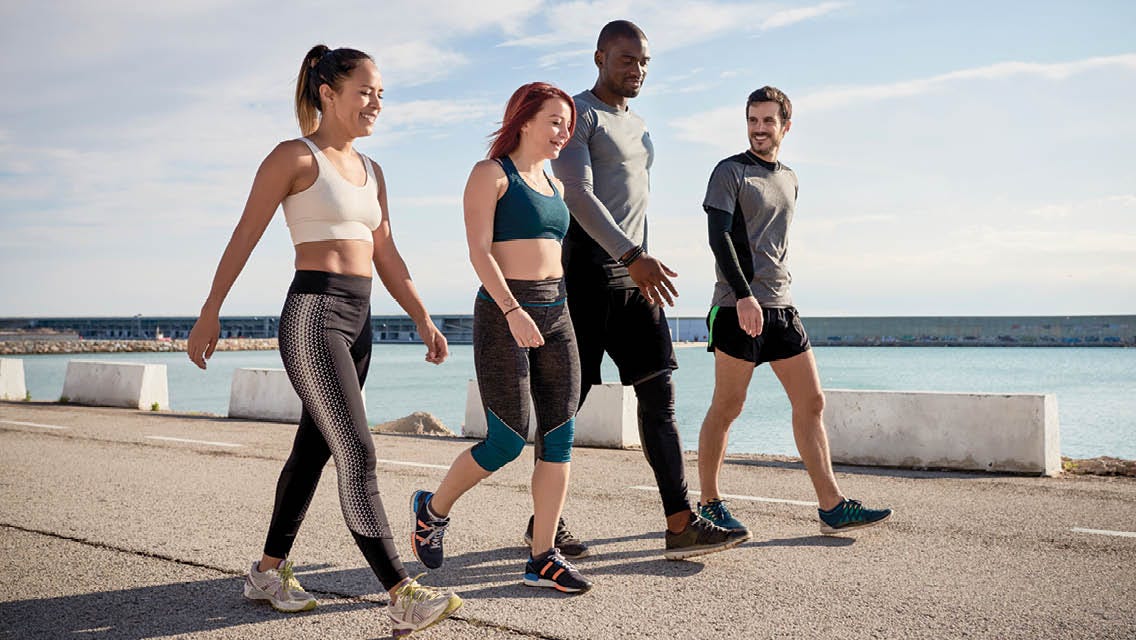“If you’re in a bad mood, go for a walk. If you’re still in a bad mood, go for another walk." — Hippocrates
Our ancestors began walking as early as 7 million years ago… and stopped walking a few hundred years ago when chairs became commonplace in Europe. The issue has only worsened with the advent of cars and the widespread transition to knowledge work. With recent innovations allowing us to travel thousands of miles in hours, humans have simultaneously lost the ability to travel mere miles on foot - one of our unique and advantageous traits. Our ability to efficiently move long distances, especially while carrying objects is one of the few physical advantages we hold over the rest of the animal kingdom - yet we’re distancing ourselves from it more than ever.
It’s no coincidence that the decline in walking is strongly correlated with widespread declines in physical and emotional health across populations. A sedentary lifestyle can be absolutely detrimental to our health, whereas simply walking 7,000 steps a day can have immense health benefits. Yet, walking remains outside the typical set of recommendations for treating poor health, especially in the United States. According to the Mayo Clinic, the average adult in the United States averages between 3,000 and 4,000 steps per day, and the CDC doesn’t even list a recommendation for daily step count (their recommendation for weekly aerobic activity equates to fewer than 3,000 steps per day).
If the benefits of walking could be sold in a pill, it would be the most successful pharmaceutical on the market. However, the status quo is to do anything but walk when given the option. If we want to live better for longer, one of the best ways to get there is by walking, one step at a time.
Physical Benefits
Cardiovascular Benefits
Walking is one of the simplest and most effective ways to improve heart health. Studies show that walking for just 30 minutes a day can reduce the risk of cardiovascular events by nearly 19%. It improves circulation, lowers blood pressure, and strengthens the heart. For those who don’t enjoy running, walking offers a sustainable, low-risk way to keep the heart healthy.
Metabolic Benefits
Walking isn’t just about movement - it’s about metabolic health. A quick 10- to 15-minute walk after meals has been shown to improve blood sugar control and reduce insulin spikes. Over time, this habit can lower the risk of type 2 diabetes and improve overall metabolic function. Walking also increases non-exercise activity thermogenesis (NEAT), the underrated daily energy expenditure that plays a key role in weight management.
Strength Benefits
Walking might not build muscle like weightlifting, but it’s far from useless for strength. Each step engages the legs, core, and even upper body when walking with proper posture. Walking on inclines or carrying weight (a concept known as rucking) further increases leg strength, endurance, and even bone density.
Emotional Benefits
Time Outside
The average adult in the United States spends 90% of their time indoors. Walking provides a perfect opportunity to get outside. Time spent outdoors has been linked to lower stress, improved mood, and reduced cortisol levels. Sunlight exposure helps regulate circadian rhythms, boosting energy levels and sleep quality. Aim to walk outside at dusk or dawn when possible.
Moderate Exercise
Walking is one of the best forms of low-intensity steady-state exercise, which is associated with reduced anxiety and depression. It has a calming effect on the nervous system while still offering physical benefits.
Time Away from Technology
Walking is one of the rare times in modern life when we can fully unplug. No screens, no notifications - just movement and space to think. In fact, walking has been shown to increase creative thinking by up to 60%.
Stepwise Strategies
Track Your Steps
According to the American Council on Exercise, people who track their steps take an average of 2,500 more steps per day than those who don’t. A simple wearable or fitness app can turn walking into a measurable habit. As we know, what gets measured gets managed.
Add a Deliberate Walk into Your Day
Don’t leave walking up to chance - build it into your routine. A 10-minute morning walk, a post-lunch stroll, or an evening unwind walk can quickly add up. Walking meetings, parking farther away, or taking the stairs are easy ways to fit more steps into a busy schedule.
Make It Harder
Walking doesn’t have to be passive. Increase the challenge by walking on inclines or carrying a weighted backpack (rucking). Adding intensity turns walking into a strength and endurance workout without the need for a gym.
Catch Up with Friends
Walking is one of the best ways to be social without distractions. Instead of meeting for coffee or drinks, invite a friend for a walk or give them a call. It’s an easy way to stack social time with movement.
Resources
Next Newsletter
We’ll discuss how to get the most out of your doctor’s appointment



